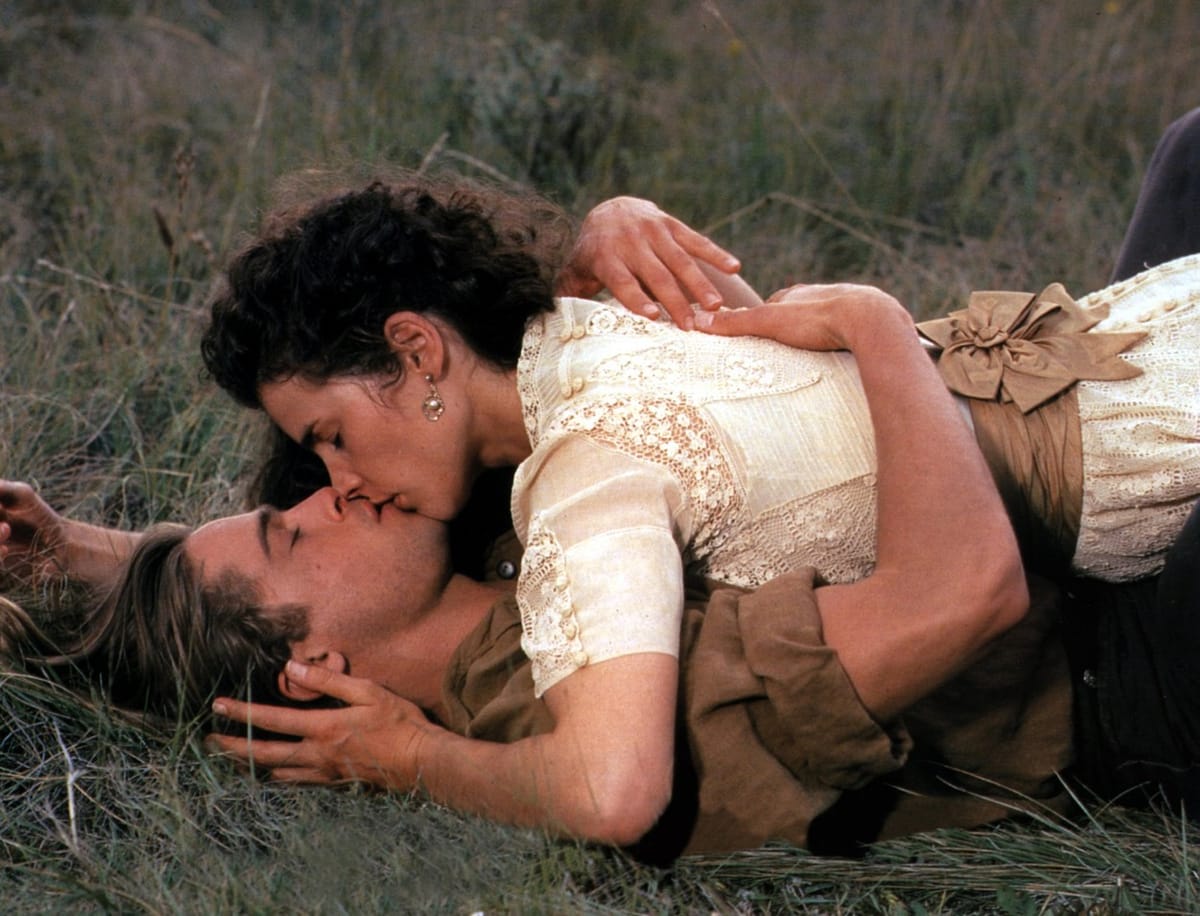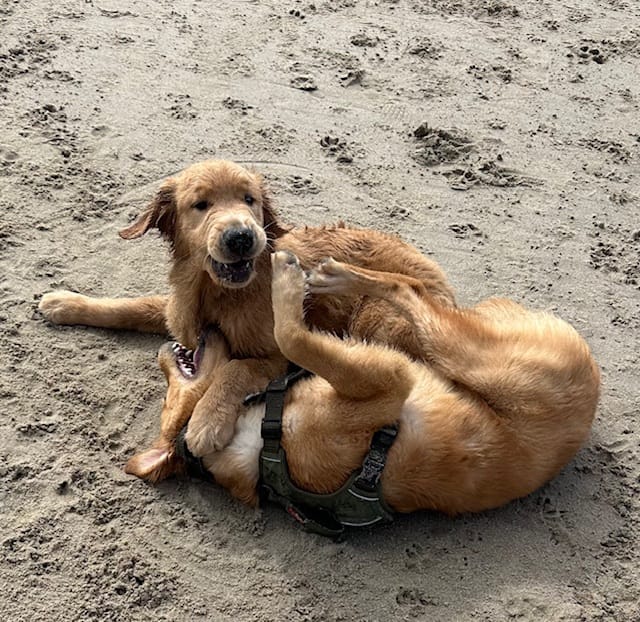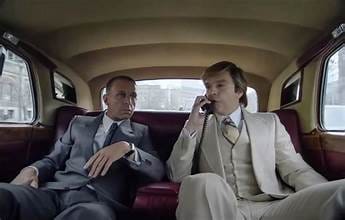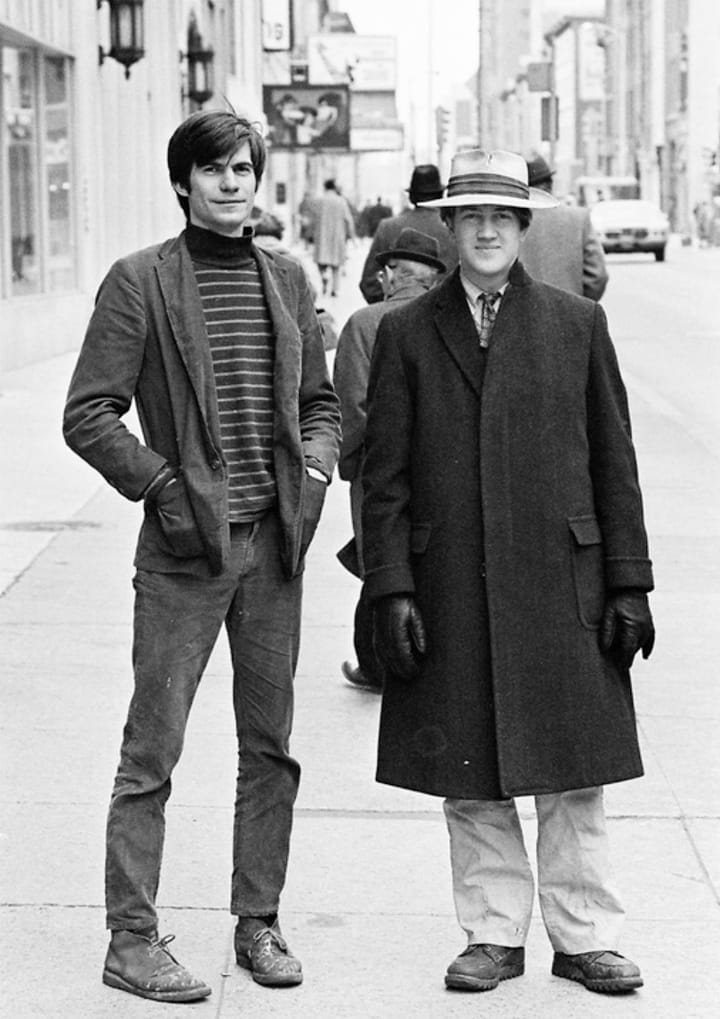Legends of “Legends of the Fall”; Pitt, Zwick and Who Pushed Whom

"I tried not to be deliberately hurtful or casually indiscreet,” director Ed Zwick told the New York Times about his recently published memoir “Hits, Flops and Other Illusions: My Forty Something Years in Hollywood, “But if people are going to behave badly, they should know better than do it around a writer.”
That said, Zwick, given his intelligence and candor, has long been a user-friendly figure for journalists. Add in an ear for dialog (and aphorisms) and he’s been enjoying good reviews (“fantastically entertaining,” said The Guardian) and best-seller ranking.
I would over time write Premiere Magazine stories about both his “The Last Samurai” (2003) and “Blood Diamond” (2006), with material harvested in post-production. But the more memorable experience came via a set visit to the Canadian wilderness in Alberta province for “Legends of the Fall”. (Such nosy intrusions happened in those days, as the studios would make them part of a director’s mandate. (Getting the stars on board to talk could be trickier.)
Thus, in the summer of 1993 I found myself in the shadow of the Rockies, on the valley floor where the production had built a sprawling, authentic ranch house to shoot in and around. Pitt as central character Tristan had a different concept of his character than Zwick—something more feral and abandoned, stoic but fighting WWI PTSD. (Undeniably akin to Yellowstone’s Kayce and 1923’s Spencer). Zwick found the results “more blank than internal”.
Temperament ensued. “I kept pushing and Brad pushed back,” Zwick writes, “I was angry at Brad for not trusting me to influence his performance.”
To credit the diplomacy of key duo, the two long shooting days I saw didn’t much reveal their struggle. I remember my article’s lead paragraph reconstructed the first scene I was there for, with Brad and Julia Ormond [misspelled in the book as `Ormand’] in bed. I was in an adjoining hut with all but the vital shooting crew, as through the wooden walls we heard a boom box (non-period and unseen by the camera, of course) playing Toad the Wet Sprocket, a fave Brad band.
As would often happen on sets where the actor listed first on the call sheet was working, the interloping reporter was meant to leave said actor to his or her work. (Later might come a phone talk.). The next day brought a long, easeful Aidan Quinn interview, going back to his days not so long before as a roofer. A solid dude, and as Zwick rightly points out, his dignity as Alfred would anchor the narrative even as Brad slung forth Tristan’s demons.
At lunchtime, I was in a slow-moving file of cast and crew, holding my plastic tray and spork, when somebody slammed me hard in the shoulder blades from behind. The assailant of course was Aidan, but by the time I picked up my items and turned, he was behind Brad, projecting innocence. It was a genius introduction, and we all just laughed.
That evening would provide the interview, conducted during Brad’s long lift home on two-lane roads. He had figured out we were both pot-adjacent guys and asked, “You got any Bob, man?” (It was understood he meant that which Mr. Marley smoked.) Alas, I had none on me, but he dutifully did the chat, finishing with a few reflective minutes in the driveway of the lodgings he shared with Julia. (The official story was they weren’t intimate, and maybe so.)
Brad was politic, cautious, and cordial; he had plenty of shooting days left. In fact, he got a Golden Globe nom for the role. Curiously, Anthony Hopkins seemed to be the elusive one. He didn’t really want to talk and was palpably even less thrilled to be on the show. The saga posited that his patriarch character had infirmities and I tried to draw him out on that, but he dismissed it—“Eh, it’s nothing, you put on a bit of a limp”. (Onscreen, the character depicted was a ruin. Recent blind quotes on Page Six purport that Hopkins was fed up.) Years later, on the set of “Silence of the Lambs,” in his trailer right before shooting the indelible scene where Jodie Foster’s Starling visits Lecter in a stone prison, I found the man who liked to be called Tony chatty and engaged. His quirk was that he memorized his lines by scribbling them repeatedly with three different-colored pens.)
I’d see Pitt a couple more times, including briefly on the set of 1997’s “The Devil’s Own” opposite Harrison Ford. Word was the production was not fun. He’d faced a condescension in Harrison’s demeanor—when Brad tested his Irish-immigrant accent on him early on, Ford grumbled, “Let’s hear it”—but he was amiable—and as people in his presence often note, more like a sunbeam than mere mortal--as he chilled in his trailer.
We reunited on the set of “Troy” in Mexico, in 2004, and our incremental familiarity over the years led to a reunion in Namibia in 2006, where a succession of long plane rides brought me I took a puddle-jumper, single-engine mail plane (cockpit stuffed with FedEx envelopes) to a landing strip in sandy Swakopmund, on that southern African country’s Skeleton Coast. Brad and then-wife Angelina, a notorious pair since coming together the prior year, were expecting a child and they had absented themselves from prying international eyes in this primordial environment where lions had been known to creep out of the jungle to make a meal of the giant fur seals that basked on the shoreline. The rough and ready military vets of the German “adventure tour” group who ferried me about handed me off one day to local naturalist I’ll call Jimmy. As we traversed giant dunes spotting skinks, I had occasion to ask him about the local head of Brad and Angelina’s security, a gruff chap who like Jimmy was a veteran of the region’s colonial wars. “Oh,” said Jimmy, not smiling below his 500-yard squint, “He’s a very dangerous man.”
Came the evening when Brad fetched up at the town’s main if not-quite-luxe hotel, parking his deep-purring BMW motorcycle by the porch where I sat. We drank a fair amount of wine, talking about his recent shoot for “Babel” and his honest compassion for the folks in New Orleans who’d been subjected to hurricane Katrina.
It was past our stop time when he throttled off into the moonless night, by then late showing up at his heavily fenced-off compound a few miles off. Moments later up roared a dusty, kitted-out Land Rover. Out popped the security man, plus a young buck who looked dangerous himself. They braced me on the porch. “I guess I kept him a little over,” I confessed and got back a level look—"Shouldn’t have done that.”
Yes sir. Please don’t kill me.
Brad and I both survived, but by the time “Babel” came out, Premiere’s French publishers had shut the magazine down.
The article would end up on Portfolio.com, which outlet soon died too. In retrospect, it was a “the lamps are going out all over Europe” moment—for set visits and the publications that staged them.





Comments ()